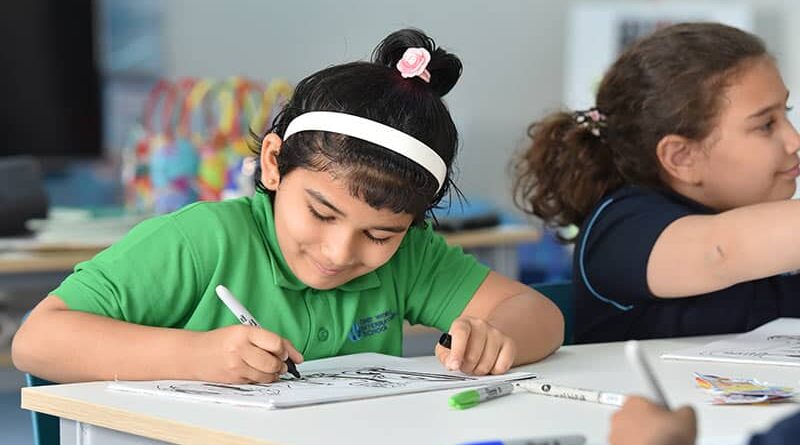What Factors Influence a Child’s Language Development?
Language development is one of the most essential aspects of a child’s growth. It enables children to communicate with others, express their thoughts, and understand the world around them. From the moment they are born, children start absorbing language from their environment. However, various factors can influence how a child learns language, and these factors range from genetic and biological influences to environmental and social experiences. Understanding what affects a child’s language development is crucial for parents, educators, and caregivers to provide the best support for children’s growth.
1. Genetics and Biology
A child’s language development begins with the inherent biological and genetic factors they inherit from their parents. While the environment plays a vital role, children are born with the ability to learn language, and some aspects of language development may be influenced by their genetic makeup.
Key Biological Factors:
- Brain Development: The child’s brain develops rapidly in the early years of life, and the brain’s plasticity during this period allows it to form language pathways. The left hemisphere of the brain, which is responsible for language, undergoes significant changes that support language acquisition.
- Hearing Ability: Hearing is crucial for language development. Children who have hearing impairments may experience delays in speech and language development, as they are unable to fully hear the sounds they need to learn language.
- Genetic Predisposition: Some children may have a natural aptitude for learning languages. Family history plays a role in how quickly a child might develop language skills, with some children exhibiting faster language development than others due to genetic factors.
2. Parental Involvement and Caregiver Interaction
One of the most significant factors that influence language development is the level of interaction a child has with their caregivers. Parents, family members, and caregivers play a crucial role in exposing children to language and providing them with opportunities to practice and learn.
Key Influences:
- Richness of Language Exposure: Children who are exposed to a variety of words, phrases, and complex sentence structures tend to develop stronger language skills. Parents who speak frequently to their children, read to them, and engage in back-and-forth conversations help foster language development.
- Responsive Communication: When caregivers respond to a child’s attempts to communicate, whether through gestures, babbling, or words, they encourage further language development. Engaging in “serve and return” interactions (where the caregiver responds to the child’s communication) builds language skills.
- Quality of Interaction: It’s not just the quantity of words that matters, but also the quality of the interaction. Positive, warm, and engaging communication, including eye contact, facial expressions, and enthusiastic tones, can boost language acquisition.
3. Socioeconomic Status (SES)
A child’s socioeconomic background has a profound influence on language development. Children from families with higher socioeconomic status tend to have more access to resources that promote language learning, such as books, educational toys, and extracurricular activities. They may also benefit from being exposed to a more extensive vocabulary, particularly if parents have higher levels of education.
Key Influences:
- Access to Books and Educational Resources: Families with higher SES are more likely to have books, educational games, and experiences that encourage language learning.
- Parental Education: Parents with higher education levels often engage in more verbal interactions with their children, use a richer vocabulary, and engage in more conversations that promote language learning.
- Stress and Economic Strain: On the other hand, children from lower socioeconomic backgrounds may face challenges, such as parental stress, limited access to educational resources, or less time spent on verbal interaction, all of which can hinder language development.
4. Cultural and Linguistic Environment
The culture and language spoken in a child’s environment influence their language acquisition process. In multilingual or multicultural homes, children may learn more than one language simultaneously, which has a unique impact on language development.
Key Influences:
- Multilingualism: Growing up in a multilingual household can affect a child’s language development in both positive and challenging ways. While bilingual children often demonstrate advantages in cognitive flexibility, they may take slightly longer to speak their first words compared to monolingual children. However, research shows that bilingualism does not hinder overall language development in the long run.
- Cultural Expectations and Practices: Different cultures have different expectations for language development. In some cultures, children are expected to speak earlier and more clearly, while in others, children may take more time to develop language skills, and early speech may be less emphasized.
5. Social Interaction and Peer Influence
Peer interactions are another significant factor that influences language development. As children interact with their peers, they are exposed to new vocabulary, language structures, and ways of communication.
Key Influences:
- Play and Socialization: Peer play is one of the most valuable tools for language development. Through pretend play, games, and social interactions, children practice using language in a variety of contexts, which helps them learn new words and practice conversation skills.
- Social Feedback: When children interact with others, they receive feedback on their language use. This feedback helps them adjust their speech and learn more appropriate ways to communicate.
- Group Activities: Children who participate in group activities, such as sports or school projects, are encouraged to use language to express themselves, negotiate, and cooperate, further developing their communication skills.
6. Technology and Media Exposure
In today’s digital age, children are increasingly exposed to technology and media. While this exposure can offer both positive and negative influences on language development, its impact depends on the type and amount of media consumed.
Key Influences:
- Educational Media: Educational shows, apps, and videos can help children learn new words and concepts. For example, shows like Sesame Street and apps like Endless Alphabet introduce children to new vocabulary and promote language skills through songs, stories, and interactive learning.
- Passive Media Consumption: Excessive passive consumption of media, such as watching television or playing video games without parental interaction, can limit verbal communication and reduce opportunities for active language practice.
- Screen Time and Social Skills: Excessive screen time can also contribute to social isolation, preventing children from engaging in face-to-face conversations with peers and caregivers, which are crucial for developing conversational skills.
7. Health and Developmental Issues
Children with certain health or developmental conditions may experience delays or difficulties in language development. Early identification and intervention are crucial for helping these children develop language skills.
Key Issues:
- Speech and Language Disorders: Conditions like speech delays, dyslexia, or stuttering can affect a child’s ability to develop language skills in a typical way. Early speech therapy and specialized interventions can help address these challenges.
- Autism Spectrum Disorder (ASD): Children with ASD may experience delays in social communication and language development. Early interventions, such as speech therapy, can assist children in improving their language skills.
- Hearing Loss: Hearing impairments can significantly affect language development, as children may not be able to hear speech sounds clearly. Hearing aids, cochlear implants, or sign language instruction may be necessary to support language development.
Conclusion
A child’s language development is influenced by a combination of genetic, environmental, social, and cultural factors. While every child’s language journey is unique, understanding the factors that impact language development can help parents, caregivers, and educators provide the right support at every stage. Encouraging rich language experiences, providing opportunities for social interaction, and addressing any developmental concerns early on are all critical in fostering strong language skills that will serve children throughout their lives.

